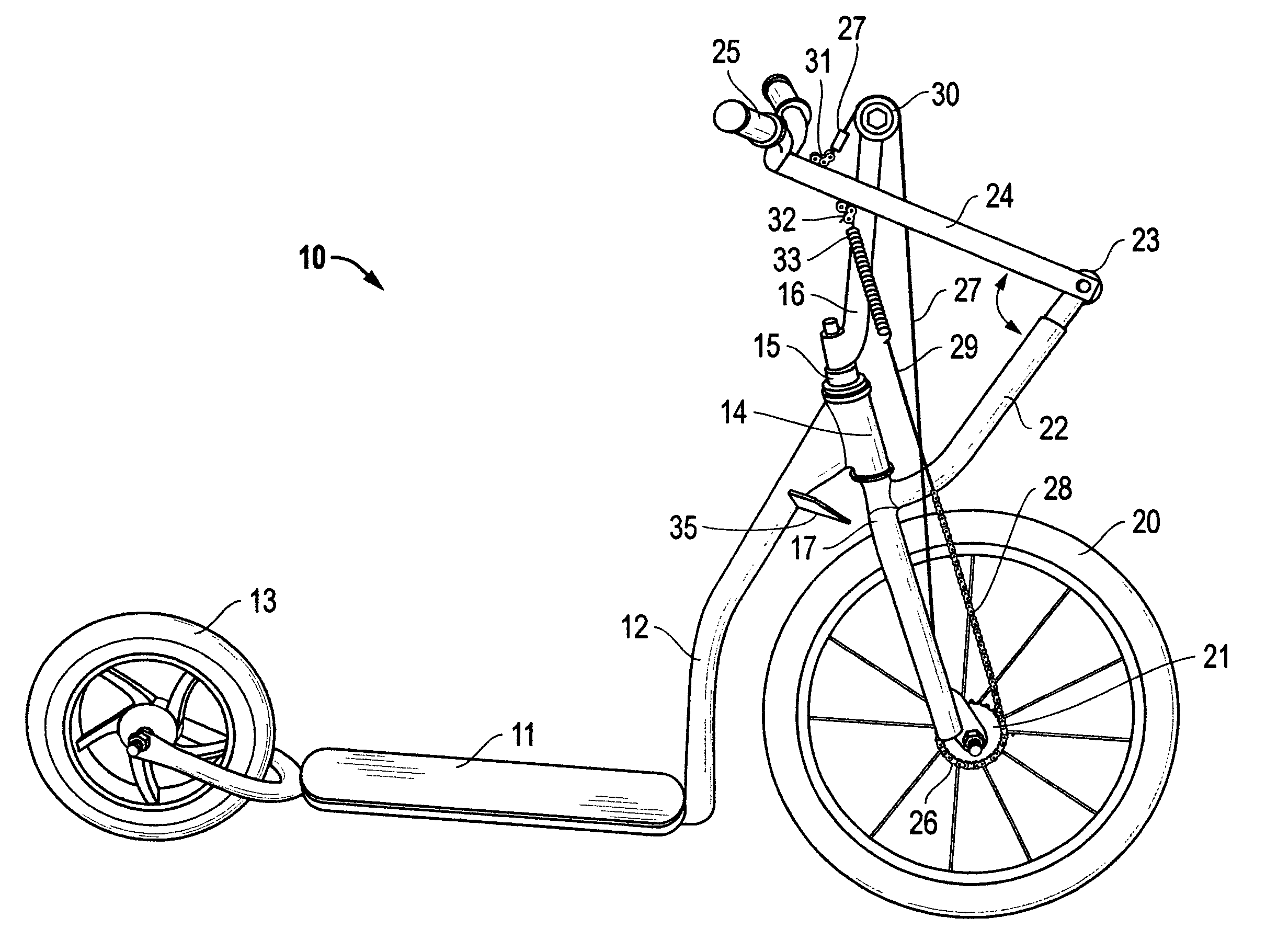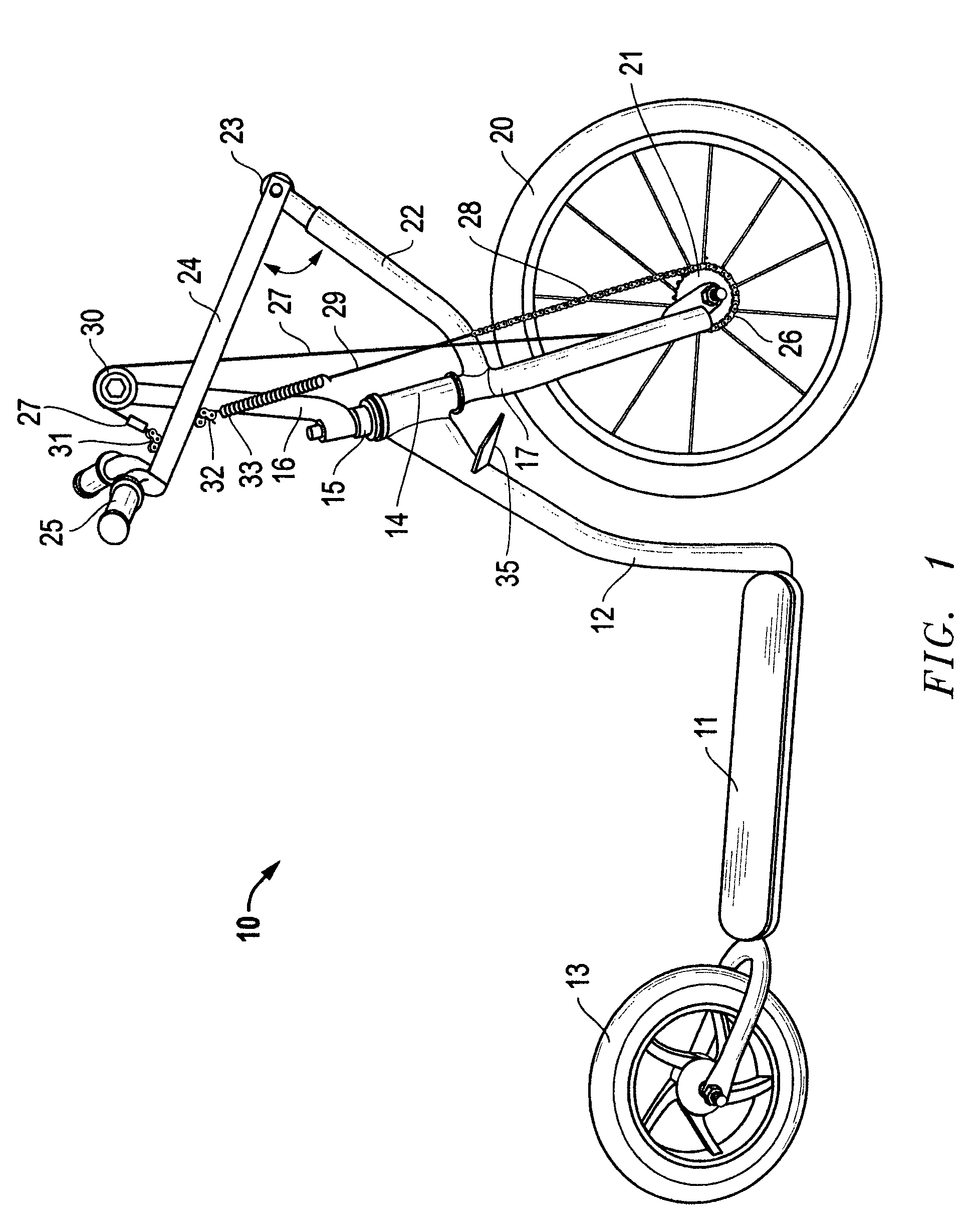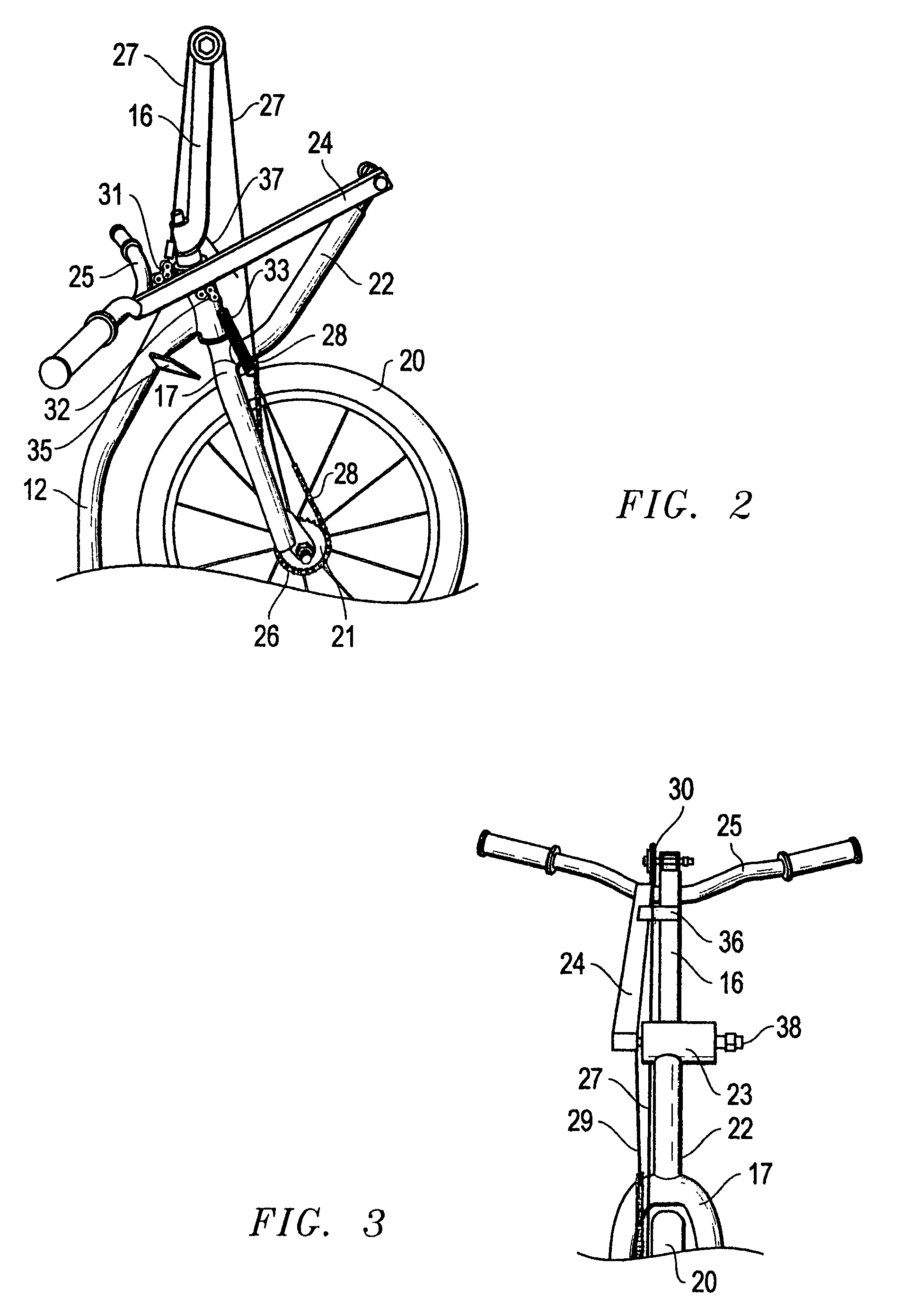Apparatus for hand propulsion and steering of a scooter, tricycle or bicycle
a technology for scooters and tricycles, which is applied in the direction of bicycles, vehicle components, rider propulsion, etc., can solve the problems of preventing their commercial success, lack of simplicity, and prohibitive cost of these items, so as to achieve sufficient top speed and reduce power loss
- Summary
- Abstract
- Description
- Claims
- Application Information
AI Technical Summary
Benefits of technology
Problems solved by technology
Method used
Image
Examples
Embodiment Construction
[0026]FIG. 1 is a side view of the preferred embodiment of the present invention in a scooter referred to as scooter 10. Floorboard 11 of scooter 10 supports the operator and is attached to framework 12, which rotatably supports rear wheel 13 at its rear portion and is joined to steering column journal means 14 at its upper forward portion. Steering column 15 is rotatably supported by steering column journal means 14, and supports idler pulley mast 16 at its upper end, and fork 17 at its lower end.
[0027]Fork 17 rotatably supports front drive wheel 20, which has one-way clutch 21 attached to its hub. Drive / steering level support mast 22 is joined to the forward side of fork 17 close to the point at which it joins steering column 15, and extends upward and forward to a point at which it supports drive / steering lever journal means 23 (refer to FIGS. 3 and 4 also).
[0028]Drive / steering level 24 and handlebars 25 are supported for up-and-down movement by drive / steering level journal means...
PUM
 Login to View More
Login to View More Abstract
Description
Claims
Application Information
 Login to View More
Login to View More - R&D
- Intellectual Property
- Life Sciences
- Materials
- Tech Scout
- Unparalleled Data Quality
- Higher Quality Content
- 60% Fewer Hallucinations
Browse by: Latest US Patents, China's latest patents, Technical Efficacy Thesaurus, Application Domain, Technology Topic, Popular Technical Reports.
© 2025 PatSnap. All rights reserved.Legal|Privacy policy|Modern Slavery Act Transparency Statement|Sitemap|About US| Contact US: help@patsnap.com



